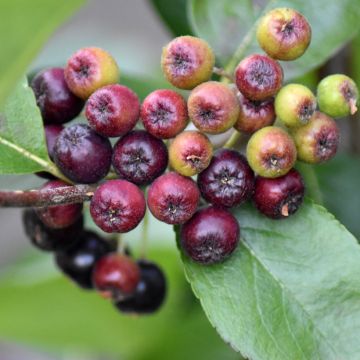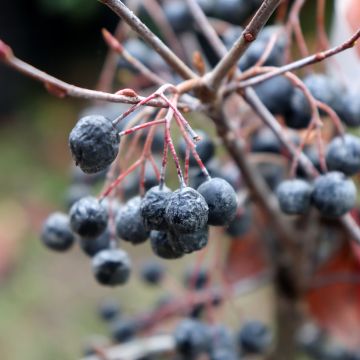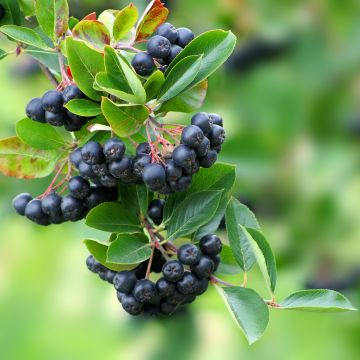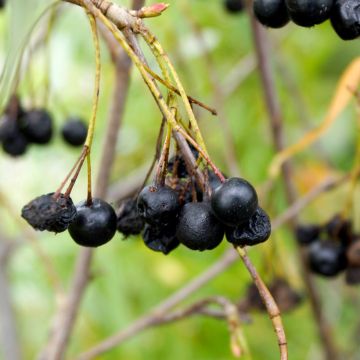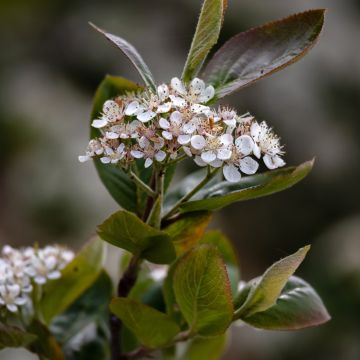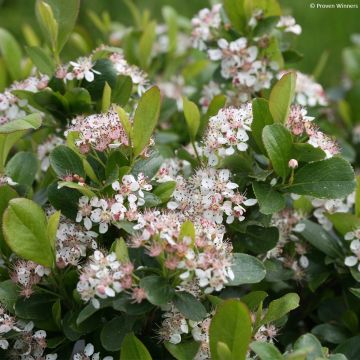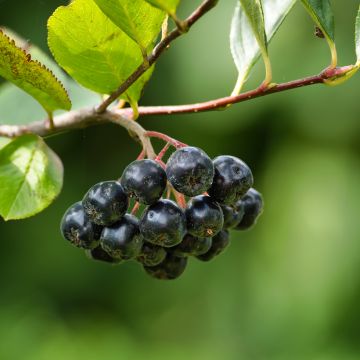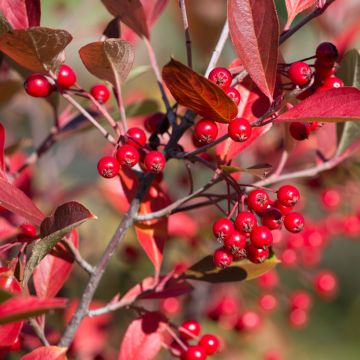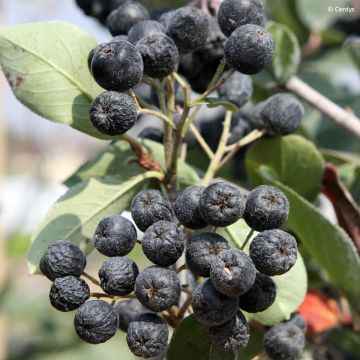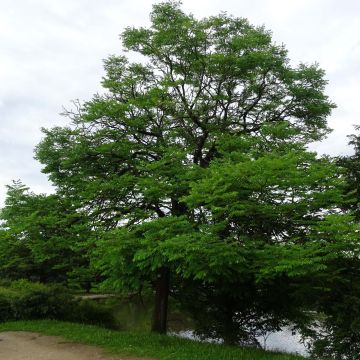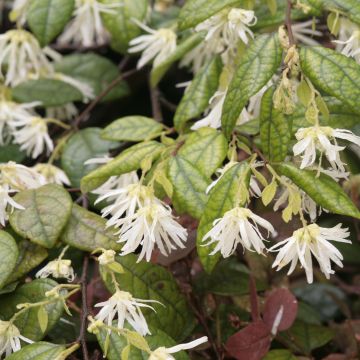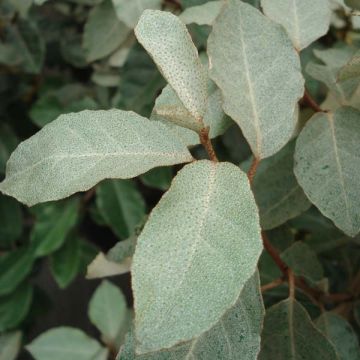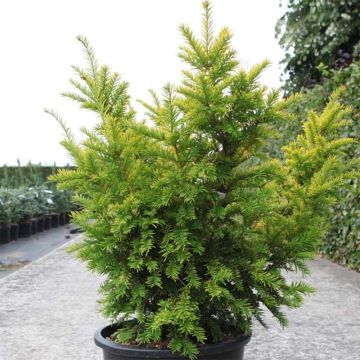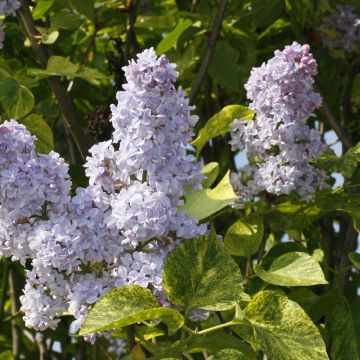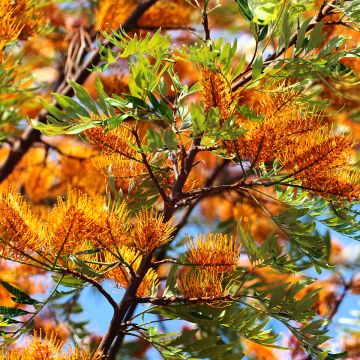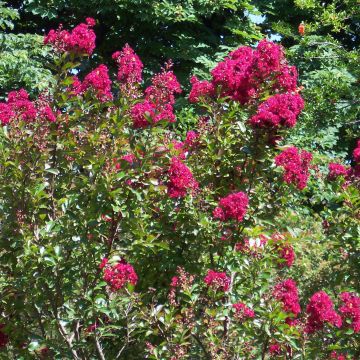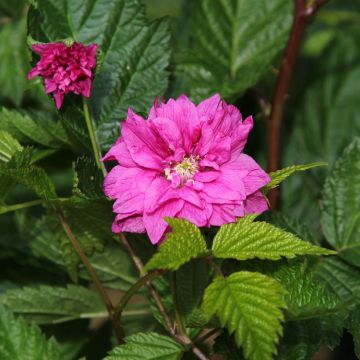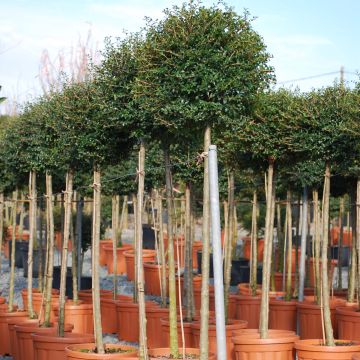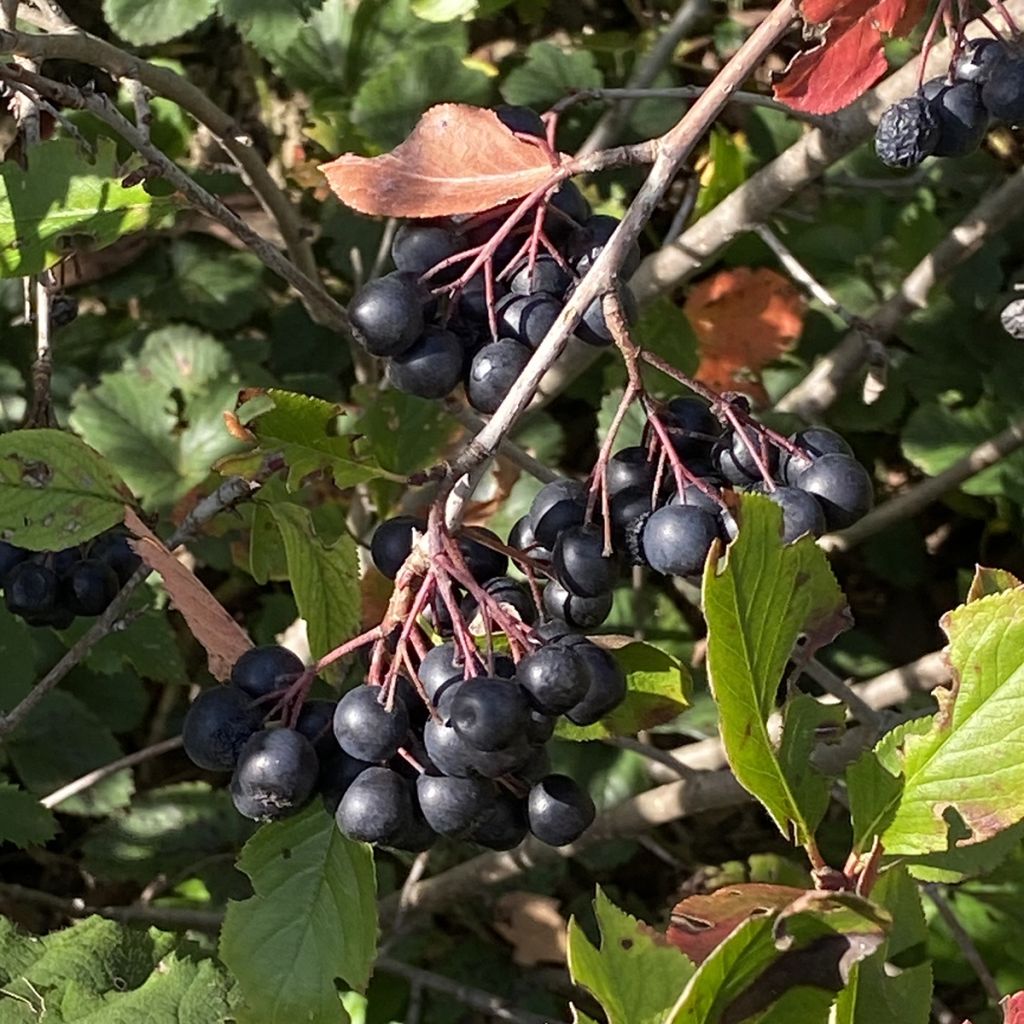

Aronia prunifolia Aron
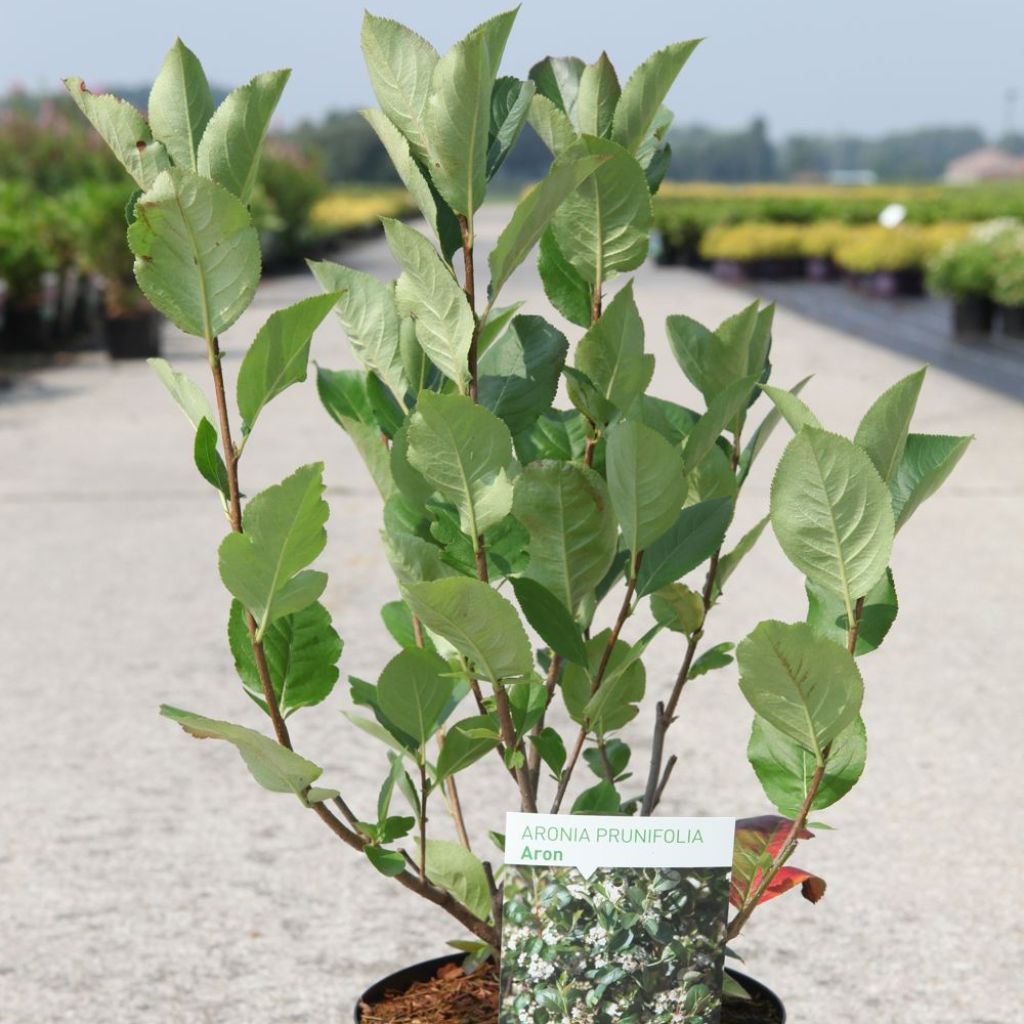

Aronia prunifolia Aron
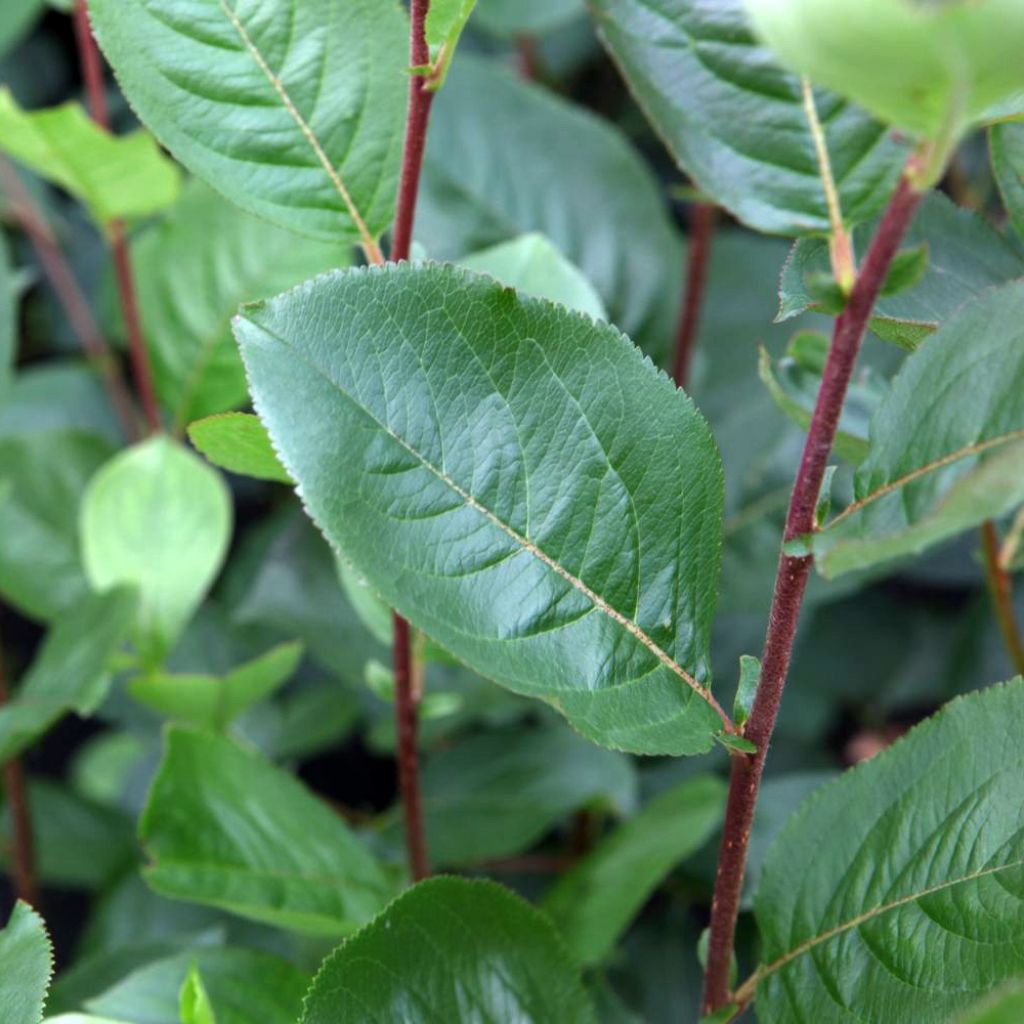

Aronia prunifolia Aron
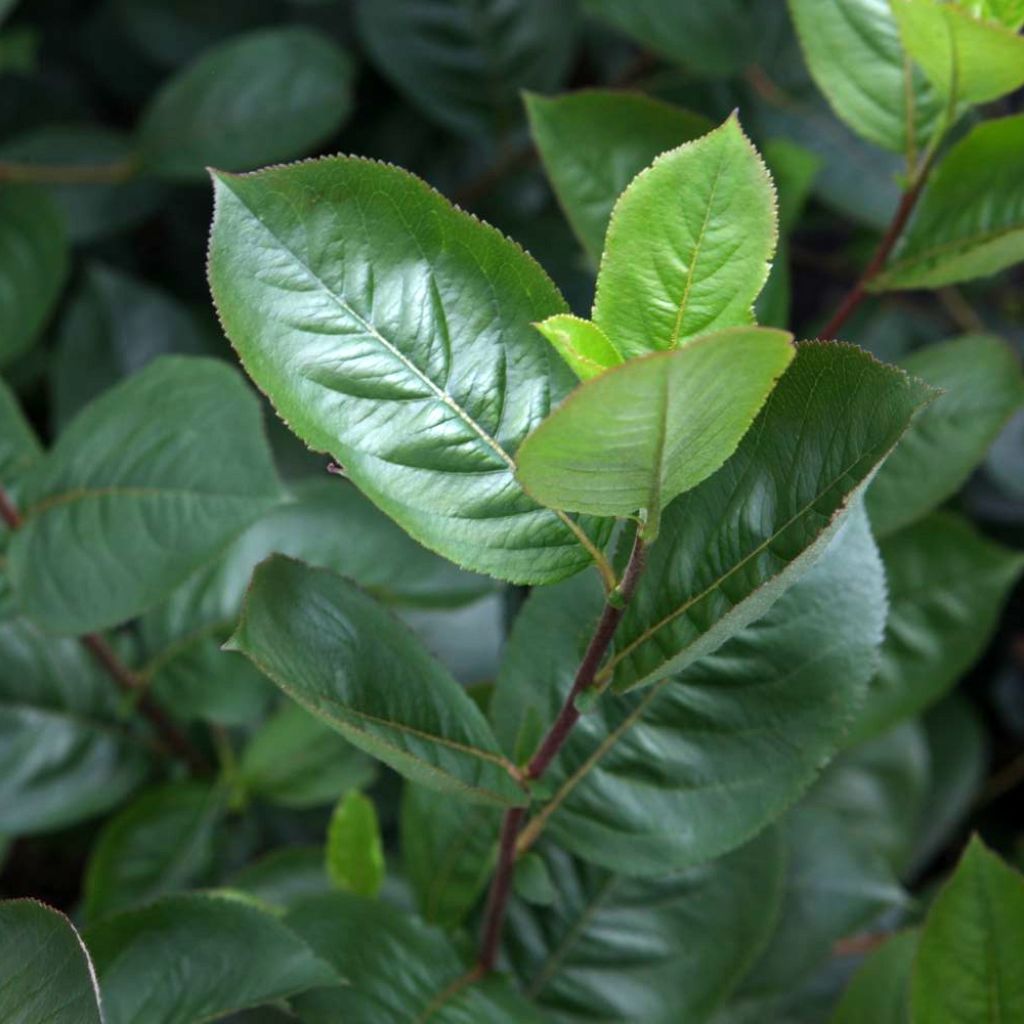

Aronia prunifolia Aron
Aronia prunifolia Aron
Aronia x prunifolia Aron
Purple Chokeberry
This item cannot be shipped to the selected country
Delivery charge from €5.90
Delivery charge from €5.90
More information
Schedule delivery date,
and select date in basket
This plant carries a 24 months recovery warranty
More information
We guarantee the quality of our plants for a full growing cycle, and will replace at our expense any plant that fails to recover under normal climatic and planting conditions.
From €5.90 for pickup delivery and €6.90 for home delivery
Express home delivery from €8.90.
From €5.90 for pickup delivery and €6.90 for home delivery
Express home delivery from €8.90.
Does this plant fit my garden?
Set up your Plantfit profile →
Description
Aronia x prunifolia 'Aron' is a variety of hybrid aronia selected for its large edible black fruits and exceptional crimson autumn foliage. In May, it blooms in umbels of small white-pink flowers, which are very honey-scented. In September, it produces sweet berries, which are slightly astringent but improve in taste when cooked or prepared as delicious jellies, pastries, fruit syrups or jams. This small erect bush does not exceed 1.5 m (4.9 ft) in height and easily finds its place in fruit hedges and at the back of borders in countryside-style gardens. Very hardy, it grows in sun or partial shade, in any deep, moist, preferably non-calcareous soil.
Aronia x prunifolia 'Aron' has the genes of Aronia melanocarpa, the black-fruited aronia, and those of A. arbutifolia, the aronia with arbutus-like leaves. It is now extensively planted in Eastern European countries to meet the demand of the Asian market. Native to Canada and the northeastern United States, Aronia plants are highly cold-resistant and thrive in moist, slightly acidic soils. Aronia belongs to the vast Rosaceae family and is a distant cousin of roses, plum trees, and brambles.
'Aron' forms a sparsely branched suckering shrub, developing several trunks with an erect, open habit, reaching about 1.5 m (4.9 ft) in height and 2 m (6.6 ft) in width, sometimes more depending on growing conditions. It shows a fairly slow growth in its early years. Its bark is smooth and reddish-brown. It bears alternate, simple, ovate, finely toothed leaves, 4 cm to 5 cm (1.6 in to 2 in) long, with a glossy dark green colour, which truly blaze in autumn, adopting various shades of crimson to violet. In April-May, its flowers appear, which are white with pale pink spots, and 2 cm (0.8 in) in diameter. Gathered in corymbs, they are very numerous and highly honey-scented. They give way to clusters of round fruits, 1.5 cm (0.6 in) in diameter, with a shiny black colour while their stalks turn red. The fruits are sweet and astringent, with firm flesh, and are rich in vitamin C. The fruit persists quite long into winter if not consumed by birds. 'Aron' is a self-fertile variety: a single plant is sufficient for a plentiful harvest.
Hardy and naturally resistant to diseases and pests, Aronia is an excellent free-standing hedge shrub. While it tolerates poor soils, it will only reach its full potential in non-calcareous, moist, deep, slightly acidic soil. It fits well in isolated plantings, in a free-standing, countryside or hedgerow hedge, as well as in large shrub borders. To achieve a spectacular mass effect, plant it in groups of 3 to 6 plants of the same variety. It combines in a hedge that is both beautiful and delicious with other small fruit shrubs, foliage shrubs, or flowering shrubs, such as apple trees, plum trees, ornamental cherry trees, male dogwood, hedge honeysuckle, serviceberries, Goumi, anemone trees, May berries, sea buckthorn (Hyppophae rhamnoides), Goji, and blueberries. Plenty of options to create vitamin-packed cocktails for the whole family!
Aronia fruits can be consumed fresh, cooked, as jam, or as juice mixed, for example, with cranberry juice and apple juice. Chinese pharmacopoeia attributes medicinal properties and beneficial properties for human health to the berries of this fruit variety of Aronia. The richness in polyphenols, especially anthocyanins, vitamins B and C (3 times more than orange), minerals, and fibres makes Aronia berries one of the most interesting small fruits from a nutritional point of view.
Report an error about the product description
Aronia prunifolia Aron in pictures
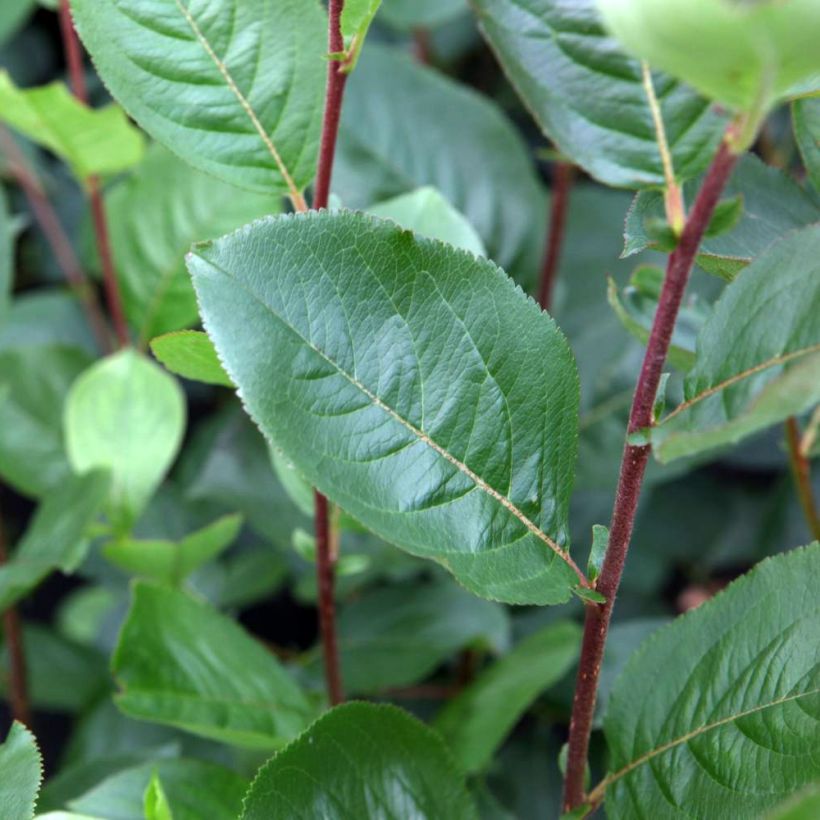

Plant habit
Flowering
Foliage
Botanical data
Aronia
x prunifolia
Aron
Rosaceae
Purple Chokeberry
Cultivar or hybrid
Other Aronia
Planting and care
Plant at the beginning of autumn in good, fertile and non-calcareous garden soil. While it is relatively tolerant, it prefers deep, moist, light and slightly acidic soils. Plant it in a sunny, non-scorching or partially shaded location. In shade, the colours are duller and the fruiting is less abundant and less flavourful. The hardiness of this bush is excellent, even in wet soil. Mulch and water well to help it establish, especially during the first summers. Remove excessive suckers that hinder fruiting. Prune the older branches at the end of winter. It is naturally resistant to diseases and parasites but can sometimes be susceptible to rust.
Planting period
Intended location
Care
This item has not been reviewed yet - be the first to leave a review about it.
Hedge shrubs
Haven't found what you were looking for?
Hardiness is the lowest winter temperature a plant can endure without suffering serious damage or even dying. However, hardiness is affected by location (a sheltered area, such as a patio), protection (winter cover) and soil type (hardiness is improved by well-drained soil).

Photo Sharing Terms & Conditions
In order to encourage gardeners to interact and share their experiences, Promesse de fleurs offers various media enabling content to be uploaded onto its Site - in particular via the ‘Photo sharing’ module.
The User agrees to refrain from:
- Posting any content that is illegal, prejudicial, insulting, racist, inciteful to hatred, revisionist, contrary to public decency, that infringes on privacy or on the privacy rights of third parties, in particular the publicity rights of persons and goods, intellectual property rights, or the right to privacy.
- Submitting content on behalf of a third party;
- Impersonate the identity of a third party and/or publish any personal information about a third party;
In general, the User undertakes to refrain from any unethical behaviour.
All Content (in particular text, comments, files, images, photos, videos, creative works, etc.), which may be subject to property or intellectual property rights, image or other private rights, shall remain the property of the User, subject to the limited rights granted by the terms of the licence granted by Promesse de fleurs as stated below. Users are at liberty to publish or not to publish such Content on the Site, notably via the ‘Photo Sharing’ facility, and accept that this Content shall be made public and freely accessible, notably on the Internet.
Users further acknowledge, undertake to have ,and guarantee that they hold all necessary rights and permissions to publish such material on the Site, in particular with regard to the legislation in force pertaining to any privacy, property, intellectual property, image, or contractual rights, or rights of any other nature. By publishing such Content on the Site, Users acknowledge accepting full liability as publishers of the Content within the meaning of the law, and grant Promesse de fleurs, free of charge, an inclusive, worldwide licence for the said Content for the entire duration of its publication, including all reproduction, representation, up/downloading, displaying, performing, transmission, and storage rights.
Users also grant permission for their name to be linked to the Content and accept that this link may not always be made available.
By engaging in posting material, Users consent to their Content becoming automatically accessible on the Internet, in particular on other sites and/or blogs and/or web pages of the Promesse de fleurs site, including in particular social pages and the Promesse de fleurs catalogue.
Users may secure the removal of entrusted content free of charge by issuing a simple request via our contact form.
The flowering period indicated on our website applies to countries and regions located in USDA zone 8 (France, the United Kingdom, Ireland, the Netherlands, etc.)
It will vary according to where you live:
- In zones 9 to 10 (Italy, Spain, Greece, etc.), flowering will occur about 2 to 4 weeks earlier.
- In zones 6 to 7 (Germany, Poland, Slovenia, and lower mountainous regions), flowering will be delayed by 2 to 3 weeks.
- In zone 5 (Central Europe, Scandinavia), blooming will be delayed by 3 to 5 weeks.
In temperate climates, pruning of spring-flowering shrubs (forsythia, spireas, etc.) should be done just after flowering.
Pruning of summer-flowering shrubs (Indian Lilac, Perovskia, etc.) can be done in winter or spring.
In cold regions as well as with frost-sensitive plants, avoid pruning too early when severe frosts may still occur.
The planting period indicated on our website applies to countries and regions located in USDA zone 8 (France, United Kingdom, Ireland, Netherlands).
It will vary according to where you live:
- In Mediterranean zones (Marseille, Madrid, Milan, etc.), autumn and winter are the best planting periods.
- In continental zones (Strasbourg, Munich, Vienna, etc.), delay planting by 2 to 3 weeks in spring and bring it forward by 2 to 4 weeks in autumn.
- In mountainous regions (the Alps, Pyrenees, Carpathians, etc.), it is best to plant in late spring (May-June) or late summer (August-September).
The harvesting period indicated on our website applies to countries and regions in USDA zone 8 (France, England, Ireland, the Netherlands).
In colder areas (Scandinavia, Poland, Austria...) fruit and vegetable harvests are likely to be delayed by 3-4 weeks.
In warmer areas (Italy, Spain, Greece, etc.), harvesting will probably take place earlier, depending on weather conditions.
The sowing periods indicated on our website apply to countries and regions within USDA Zone 8 (France, UK, Ireland, Netherlands).
In colder areas (Scandinavia, Poland, Austria...), delay any outdoor sowing by 3-4 weeks, or sow under glass.
In warmer climes (Italy, Spain, Greece, etc.), bring outdoor sowing forward by a few weeks.

































